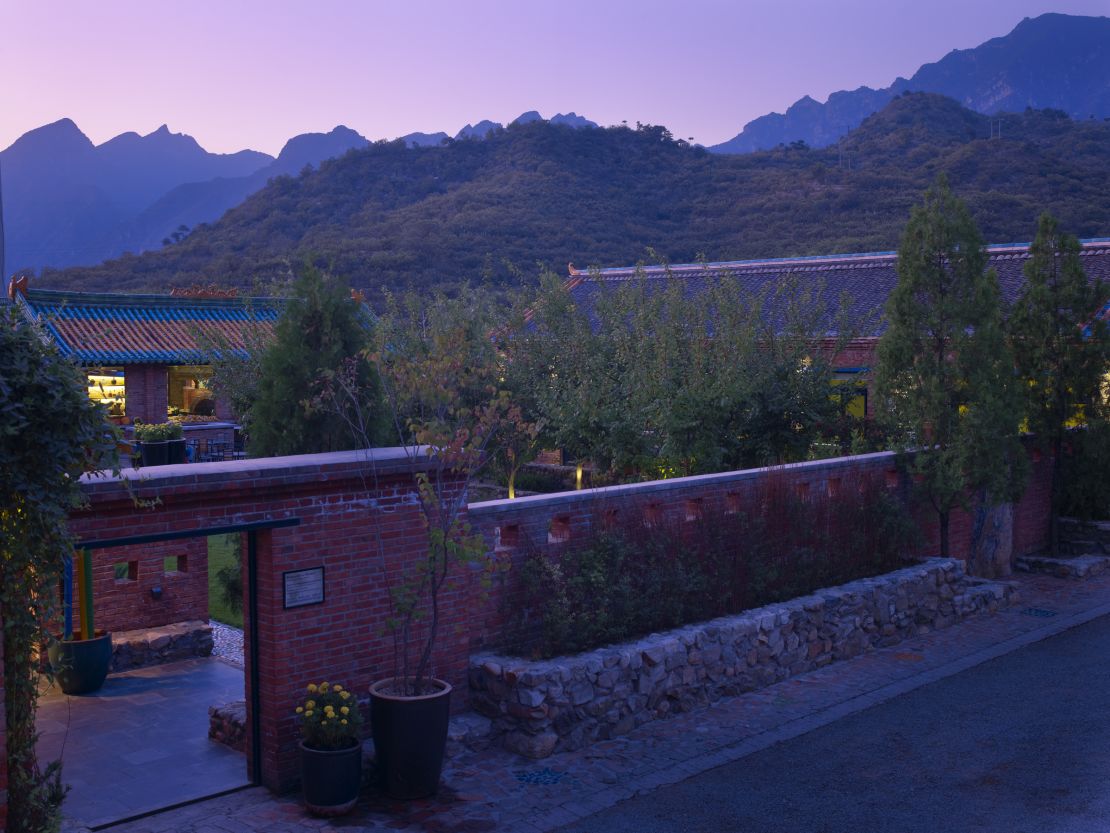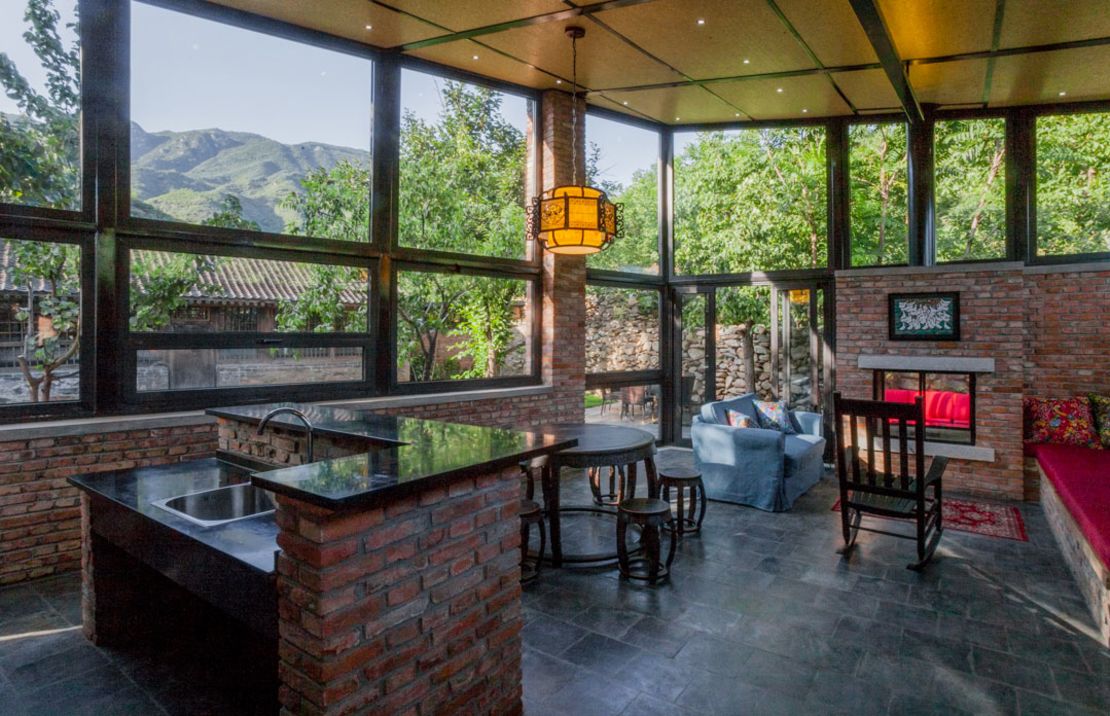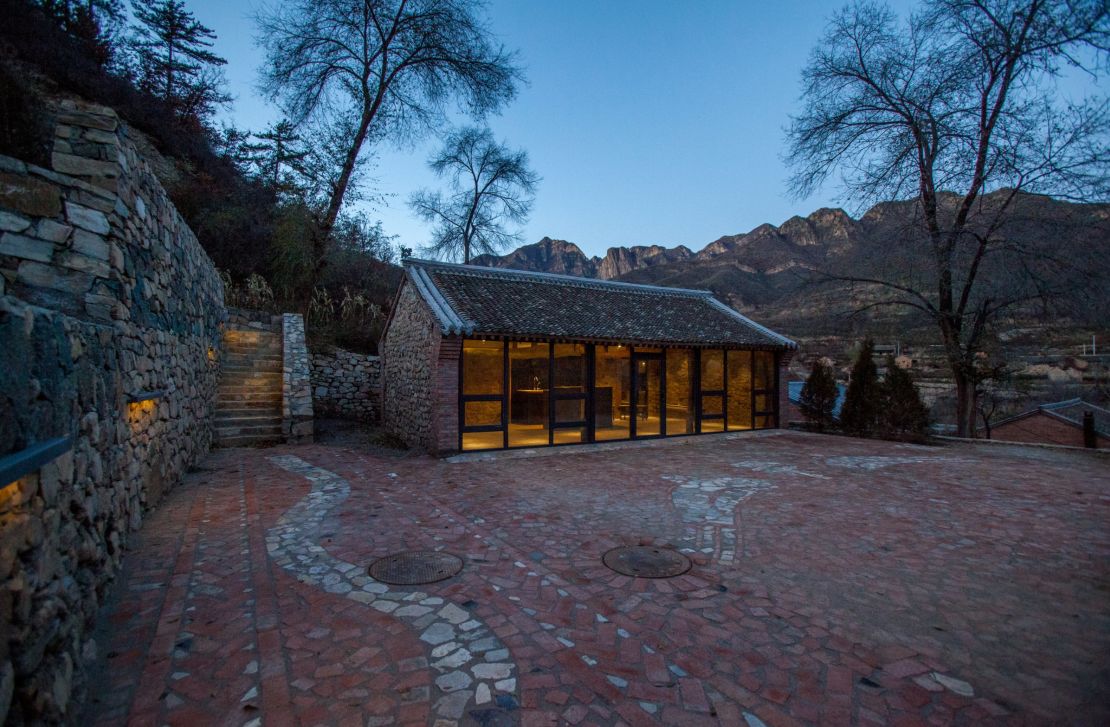Story highlights
Villagers living by The Great Wall of China are generating new income by leasing out unused houses.
Architect and designer Jim Spear is transforming Chinese village homes into luxury private residences.
The renovated village houses showcase views of the Great Wall with floor-to-ceiling windows.
In the 1990s, life in Beigou Village was difficult. There was no running water or infrastructure, and very limited job opportunities.
But over the past 20 years, the small village has seen a dramatic evolution.
The key to its success has been its location: Beigou lies in the shadow of The Great Wall of China – one of the world’s most-visited tourist destinations, drawing more than 24 million visitors in 2009, according to a report by the Global Heritage Fund.
Self-taught architectural designer Jim Spear and his wife Tang Liang, after visiting on vacation, saw what the Beigou villagers didn’t: the value of their prime real estate.
With help from the local government, the duo set out to increase tourism and strengthen the local economy with a series of architectural projects.

“People didn’t really know they had some valuable real estate at first,” says Spear. “I was the first guy to kind of ‘eat the crab’, as the Chinese say. But, believe me, they caught on pretty fast.”
One of Spear’s most successful projects was to transform an abandoned tile factory into Brickyard Retreat – a boutique hotel that hires 80% of its employees from the surrounding villages.
Several similar projects have followed, with the award-winning designers focusing on transforming rundown properties into private residences and helping villagers lease their homes to tourists.
Over the past two decades, Spear Designs has completed more than 30 weekend rural residences in and around Beijing.
The best views in China
While working and living in Beijing in the 1990s, Spear and Liang decided to renovate a village home in Mutianyu, about 50 miles (80km) north of the capital, as a weekend getaway.
The area is home to clean air, easy access to hiking trails and, of course, has a front-row seat to the Great Wall.
In 2005, the couple moved there full-time.
Can 'fast-forward' China safeguard its past?
Theirs was an unusual decision: the villages in this area were on a downward spiral, battling a declining population caused by both China’s one-child policy and urbanization, as locals moved out to cities to find work.
“The economy was very bad 20 to 30 years ago,” says Wang Quan, party secretary of Beigou Village. “The only income source was a fruit plantation.”
After a nudge from the then town mayor, Spear embarked on a mission to buoy the economy and accelerate tourism through sustainable ventures, including Brickyard Retreat and several standalone rental homes.
In 2006, they began investing in properties in the nearby Beigou Village.
New opportunities in rural China
“Over the past 10 years, the Brickyard project has brought us a lot of financial support,” says Wang. “It has brought us cash, jobs and tourists.”
In addition, as tourism in the area has increased, many villagers have been able to lease out unused homes to make extra income.
“There’s a whole movement in China for countryside houses and hotels,” says Spear. “People are cooped up in hives in the city. They want good, clean food and fresh air – there’s this idealized notion of the simple, good, country life.”
In accordance with Chinese property law, villagers can not sell the land their property sits on outright, but they can lease the right to use the house and the plot it sits on. Most leases run for 40 years.

“The first few houses about 10 years ago were quite inexpensive because there was not yet demand,” says Spear.
“Now the demand has ballooned and the local people (have enough money that they) don’t have to lease their houses, and they are willing to wait for a better deal.”
A four-room, unimproved house today costs roughly $150,000 for a 40-year lease, up from $3,000 two decades ago.
Meanwhile, Spear’s designs have sold to both Chinese and foreign clients from anywhere between $300,000 and $3 million – that includes the renovation and construction plans, as well as legal assistance to secure a 40-year lease.
As most of the renovated properties serve as holiday homes, the makeup of permanent residents in the village has changed minimally over the past couple of decades.
Spear estimates that across the four contiguous villages that make up the Great Wall International Cultural Village – Tianxianyu, Beigou, Xinying and Mutianyu – roughly 10% of homes have been leased to outsiders.
Old roots, new leaves
For Spear a sustainable approach to construction has always been essential.
From the outset, he chose to work with locally available materials, such as local rocks, granite, slate paving, and local fruitwood – all assembled by local stonemasons and carpenters.
And whenever possible, he installs eco-friendly features such as LED lighting and energy-efficient air-conditioning.
But he also made one dramatic departure from tradition.
Windows on traditional village homes always face the south, in order to insulate against northerly winter winds.
By adding windows to the north side, Spear opened up each home to unparalleled views of the Great Wall.
The views alone have been enough to attract attention from prospective homeowners, but Spear’s minimalist style and contextual touch also lend to the appeal.

Many traditional village homes have simple structures but good bones – tiled roofs, latticed windows, big wood ceiling beams, and original masonry that Spear can often salvage.
“Every house that I design respects the old house that was first there,” says Spear.
“I believe in design that speak to the existing community – you don’t want to overpower the area.”
“I like to make sure there’s light coming into the room from more than one side,” says Spear. “For instance, I often punch in little windows for surprise views.”
Romantic getaway
One of Spear’s designs, Stone Forest, was originally an abandoned three-room house. It has since been transformed in 2009 into a romantic getaway, complete with an outdoor shower, private courtyard, stained glass panels, and a terrace offering wrap-around views of the Great Wall.
This year, Spear has scaled up his services with his biggest project yet: The Dashiyao Inn. The project’s first of five phases will open in spring 2017.
It is a collective investment by Jingxibei Real Estate Development Company and former residents of six abandoned mountain villages, who will all own shares in the 23-room, two-villa hotel.
“The residents feel a sense of ownership of their original homes, which is on communal land that’s owned by the village,” says Spear.
“If the resort makes money, they make money. They also benefit from reliable incomes and new jobs. There’s training for hospitality, housekeeping, guards, landscaping, servers, and cooks, managers – alternatives to agriculture and government work.”































